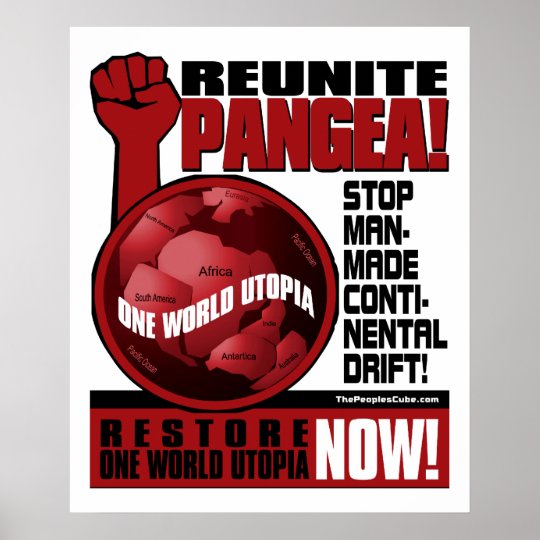
Posted on 10/09/2018 2:26:16 PM PDT by ETL
"...roughly 251 million years ago — Earth's continents abutted one another, merging to form the supercontinent Pangea. That land mass, which straddled the equator like an ancient Pac-Man, eventually split into Gondwana in the south and Laurasia in the north.
From there, Gondwana and Laurasia separated into the seven continents that we know today. But the constant movement of Earth's tectonic plates raises a question: Will there ever be another supercontinent like Pangea?
The answer is yes.
Pangea wasn't the first supercontinent to form during Earth's 4.5-billion-year geologic history, and it won't be the last.
"That's the one part of the debate that there isn't much debate over," Ross Mitchell, a geologist at Curtin University in Perth, Australia, told Live Science.
"But what 'the next Pangea' will look like … that's where opinions diverge."
Geologists agree that there is a well-established, fairly regular cycle of supercontinent formation. It's happened three times in the past. The first one was Nuna (also called Columbia), which existed from about 1.8 billion to 1.3 billion years ago. Next came Rodinia, which dominated the planet between 1.2 billion and 750 million years ago. So, there's no reason to think that another supercontinent won't form in the future, Mitchell said.
The convergence and spreading of continents are tied to movements of tectonic plates. The Earth's crust is divided into nine major plates that glide over the mantle, the liquid layer that sits between the core and the semi-solid crust. In a process called convection, hotter material rises from near the Earth's core toward the surface, while colder mantle rock sinks. The rising and falling of mantle material either spreads plates apart, or forces them together by pushing one under another.
(Excerpt) Read more at livescience.com ...

"Given that the heyday of Pangea was probably 300 million years ago, Amasia's would be 300 million years from now," Mitchell said. "But it could form as soon as 200 million years from now."
However, predicting the birth year of Amasia isn't so simple.
"The difficult thing about predicting the Pangea of the future is that you can't take present-day plate motions and hit fast-forward," Mitchell said. Plate motions can change unexpectedly, with imperfections in the seafloor causing plates to veer from their trajectories."


Not a big fan of Pangea. I kind of like the oceans separating us from the lefties on the right and the lefties on the left.

I think you can order one on Amazon. But it only has three stars.
*ping*

.roughly 251 million years ago, the earth was without form, and void; and darkness was upon the face of the deep.
pfl
Stop super continent now buy continent credits
Valentine & Moores 1970 were probably the first to recognize a Precambrian supercontinent, which they named ‘Pangaea I’.[5]
It was renamed ‘Rodinia’ by McMenamin & McMenamin 1990 who also were the first to produce a reconstruction and propose a temporal framework for the supercontinent.[6]
Rodinia formed at c. 1.23 Ga by accretion and collision of fragments produced by breakup of an older supercontinent, Columbia, assembled by global-scale 2.0–1.8 Ga collisional events.[7]
Rodinia broke up in the Neoproterozoic with its continental fragments reassembled to form Pannotia 633–573 million years ago.
In contrast with Pannotia, little is known yet about the exact configuration and geodynamic history of Rodinia.
Paleomagnetic evidence provides some clues to the paleolatitude of individual pieces of the Earth’s crust, but not to their longitude, which geologists have pieced together by comparing similar geologic features, often now widely dispersed.
The extreme cooling of the global climate around 717–635 million years ago (the so-called Snowball Earth of the Cryogenian Period) and the rapid evolution of primitive life during the subsequent Ediacaran and Cambrian periods are thought to have been triggered by the breaking up of Rodinia or to a slowing down of tectonic processes.[8]
Love the poster reunited pangia. Sent it around.
Yes but you have to add the sauce at the exact right time.
The Palisades of New Jersey were formed as a result of the breakup of supercontinent Pangaea, beginning roughly 200 million years ago. They were underground lava/magma flows that rose up from below as the northeast coast began to fracture. It was the birth of the Atlantic Ocean.
Gondwanaland Always makes me think of Stanley and Livingstone in giant pots of boiling water with howling natives all around chucking spears and banging tattoos on hollow logs.
Yep! I remember it well...If I hadn't been broke at the time, I could have bought lots of land and been rich now...
Notice how the interesting stuff didn’t start until about 500 million years ago. Land was devoid of life until then, too.
Disclaimer: Opinions posted on Free Republic are those of the individual posters and do not necessarily represent the opinion of Free Republic or its management. All materials posted herein are protected by copyright law and the exemption for fair use of copyrighted works.